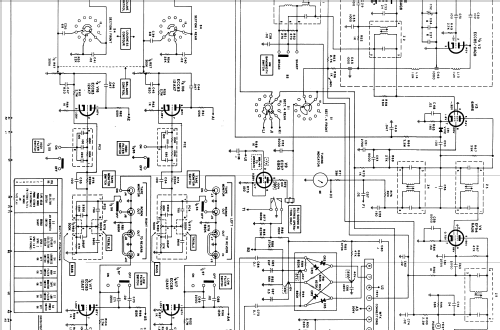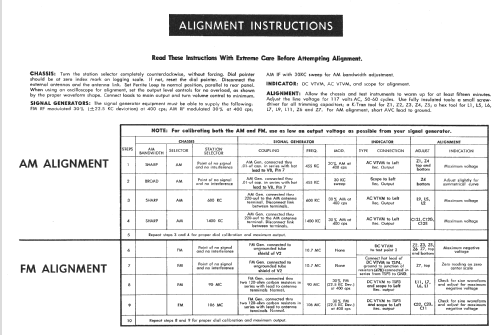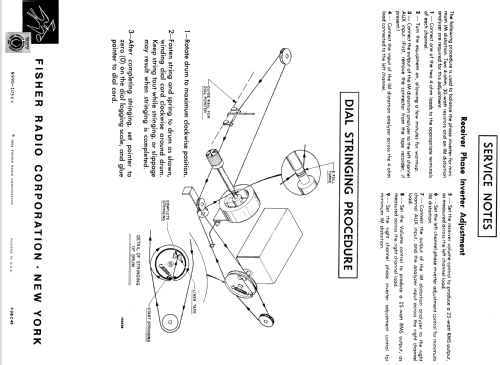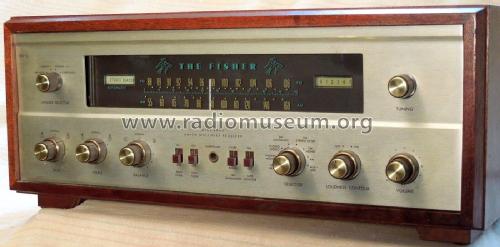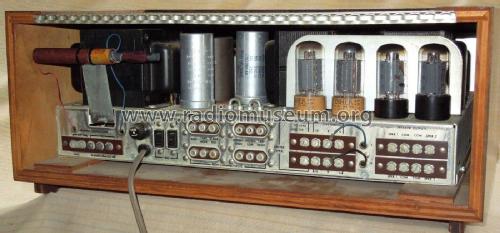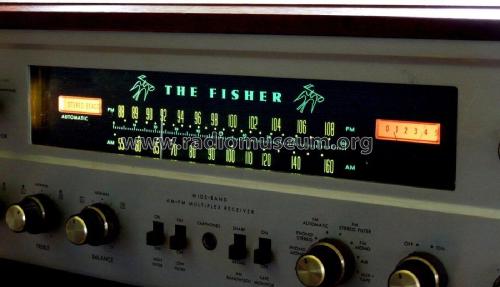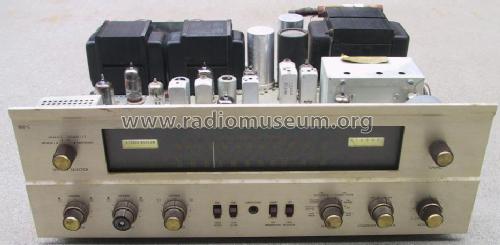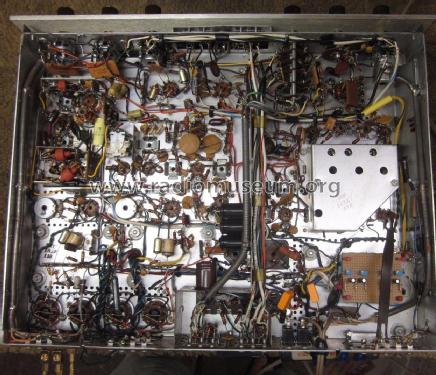- Produttore / Marca
- Fisher Radio; New York (NY)
- Anno
- 1963–1968
- Categoria
- Radio (o sintonizzatore del dopoguerra WW2)
- Radiomuseum.org ID
- 26710
Clicca sulla miniatura dello schema per richiederlo come documento gratuito.
- Numero di tubi
- 22
- Valvole
- EC97 ECC85 6HR6 EF94 EF94 EF94 EF93 EK90 EC97 ECC83 ECC83 ECC83 ECC83 ECC83 7591 7591 7591 7591
- Principio generale
- Supereterodina con stadio RF; ZF/IF 455/10700 kHz
- N. di circuiti accordati
- 7 Circuiti Mod. Amp. (AM) 13 Circuiti Mod. Freq. (FM)
- Gamme d'onda
- Onde medie (OM) e MF (FM).
- Tensioni di funzionamento
- Alimentazione a corrente alternata (CA) / 220 Volt
- Altoparlante
- - Questo apparecchio richiede altoparlante/i esterno/i.
- Potenza d'uscita
- 60 W (75 W max.)
- Materiali
- Mobile di metallo
- Radiomuseum.org
- Modello: 800C - Fisher Radio; New York NY
- Forma
- Chassis o in scatola da montaggio
- Dimensioni (LxAxP)
- 445 x 146 x 380 mm / 17.5 x 5.7 x 15 inch
- Annotazioni
- HiFi-Stereo-Tuner-Verstärker. Ausgangsleistung 2× 33 W (Sinus); Nußbaum-Gehäuse gegen Mehrpreis (120,- DM).
Vertrieb über ELAC. 4 ZF+3 Begrenzerstufen. Frequenzbereich: 20...20.000 Hz +/- 1 db. Brumm und Rauschen -85 db
- Peso netto
- 17 kg / 37 lb 7.1 oz (37.445 lb)
- Prezzo nel primo anno
- 2,760.00 DM
- Fonte esterna dei dati
- erb
- Fonte dei dati
- Handbuch VDRG 1966/1967
- Altri modelli
-
In questo link sono elencati 592 modelli, di cui 505 con immagini e 204 con schemi.
Elenco delle radio e altri apparecchi della Fisher Radio; New York (NY)
Discussioni nel forum su questo modello: Fisher Radio; New: 800C
Argomenti: 1 | Articoli: 1
The Fisher 800C is one of the best all-tube broadcast receivers I have ever owned. It is exceptionally sensitive with excellent selectivity and stereo performance. As such, this radio is my all-time favorite broadcast tube receiver. It's expensive on the collector market but it is worth it.
Fisher launched this 800C over their 500C for those customers who also demanded AM broadcast coverage. Which it does very well given the presence of an RF amplifier (EF93) before the mixer in the AM chain. The only thing I would have liked is the use of an EM84 tuning indicator instead of the moving coil meter that was used, but that is a matter of opinion.
The radio differs from its contemporary US or Japanese broadcast receivers of the time. When looking at the bottom of the chassis, one will see many European components are used, as well as typical European construction techniques. I do not know where the design was done but there must have been a strong European influence because to me, the insides appear much more like European broadcast radios than American radios of the time.
The diagrams on this site I scanned from the original Fisher service manual which I bought on eBay but I make it avaialbe to you for free. I scanned the manual in it's entirely in high resolution and as continuous diagrams. Unfortunately a scan like this requires too much server space. If you want a copy of the original scan, please email me at fisher800c[A*T]gmail.com
Loek d'Hont, 18.Jun.09

